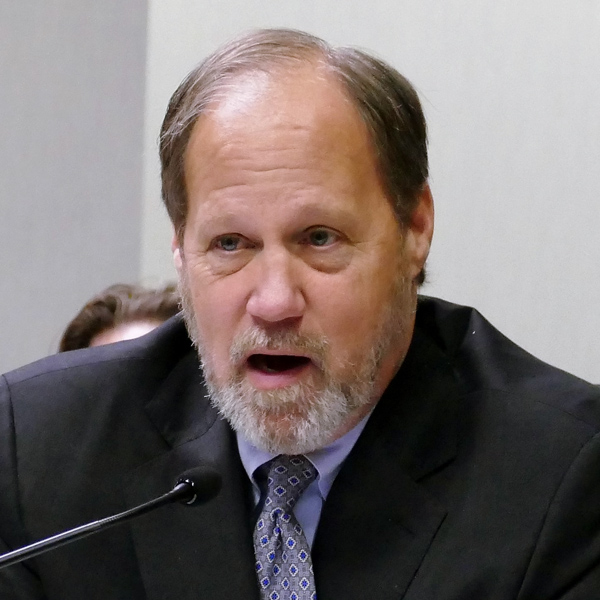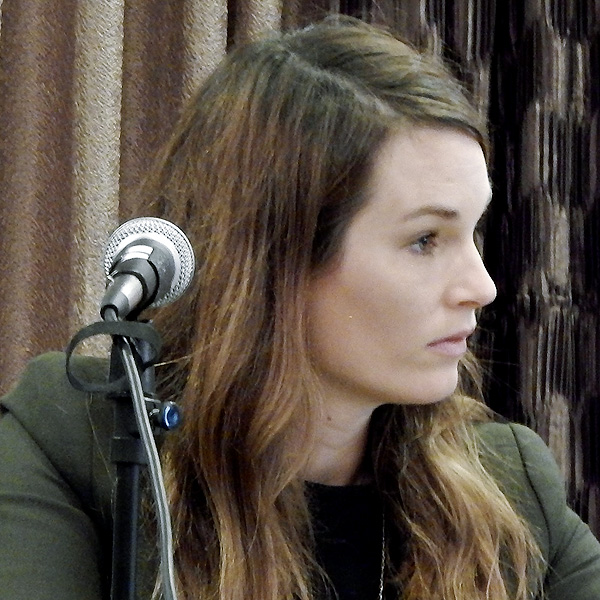The Texas Public Utility Commission on Thursday unanimously agreed to the principles necessary to replace ERCOT’s energy-only market with a performance credit mechanism (PCM), sending the proposal to an uncertain fate in the legislature.
Chair Peter Lake guided the commission through a discussion and then an editing session of his “underlying foundation” for the mechanism. The commissioners summarized the proposal in a four-page memo attached to the order (Project 53298).
The PCM has been criticized by some as a sop to the market’s generators. It would reward them with credits based on their performance during a determined number of scarcity hours. Those credits must be bought by load-serving entities, based on their load during those same hours, or exchanged by LSEs and generators in a voluntary forward market.
The commission ordered PUC staff and ERCOT to delay implementation of the PCM “until such time as the 88th Legislature has had an opportunity to render judgment on the merits of the PCM and/or establish an alternate solution.”
The recommendation fulfills the PUC’s statutory obligation under Senate Bill 3, enacted following February 2021’s deadly winter storm. It completes a process that began in December 2021 and involved work sessions, stakeholder feedback and industry criticism. (See Proposed ERCOT Market Redesigns ‘Capacity-ish’ to Some.)
But State Sen. Charles Schwertner (R), author of SB3 and chair of the Business and Commerce Committee, tweeted that the PUC “chose to ignore the clear direction of the [Texas Legislature] by voting to replace the state’s competitive energy market with a costly and complex proposal that is unlikely to deliver the dispatchable generation resources that Texas needs. It’s unacceptable.”
In a letter to the commission last week, Schwertner said it would be “imprudent” for the commission to act without the legislature’s “consultation and collaboration.” (See PUC Closes in on ERCOT’s Market Redesign.)
The commission’s revised memorandum said it would open a project “to evaluate and establish an appropriate reliability standard” based on the PCM concept outlined in a report by consultants Energy and Environmental Economics (E3). The firm evaluated six alternatives but did not recommend the PCM, saying it would be too complex and costly, estimating the credits could cost retailers $5.7 billion a year. (See Proposed ERCOT Market Redesigns ‘Capacity-ish’ to Some.)
“Once implementation is launched at some point in the future subject to consideration and direction of the 88th Legislature, the commission will develop an implementation plan,” the PUC said in its memo.
It said the plan will identify which entity — including among the commission, ERCOT and the Independent Market Monitor — will be responsible for analysis related to each of 17 “decision points,” including such details as the PCM compliance period and the number of hours per compliance period.
“For decision point items relegated to ERCOT analysis, the commission will direct ERCOT to undertake stakeholder evaluation subject to ERCOT board vote for ultimate recommendation for commission approval,” the commission said. “The ultimate authority for all of these and any additional decision points lies with the commission.”
The commission also tasked ERCOT with evaluating “bridging options” to retain existing assets and build new generation until the PCM can be fully implemented. It said the grid operator should report at the commission’s Jan. 26 open meeting with a proposed date for delivering a report detailing the options ERCOT considered, its board’s preferred solution and implementation steps.
“I think this reflects a deliberative process on the part of the commission,” Commissioner Will McAdams said. “I said a year and a half ago that I think our finest hour is to come, and this is part of it. It’s a good product, and we need to be able to defend it.”
Reaction
Others weren’t so sure.
|
“It was difficult to know what they were talking about,” Katie Coleman, who represents Texas Industrial Energy Consumers, said after the meeting but before the edited memo was posted. “The PCM they voted on today is not the PCM in [the consultant’s November] report.”
Coleman, who has testified several times before lawmakers and the commission about market designs, noted various legislative committees have requested in multiple hearings that they be given a construct they can consider.
“They’re trying to redesign a market that’s been in place for two decades on the fly in an open meeting. It needs a lot more work and thought than what’s been put into it so far,” Coleman said. “This proposal … seems to have changed substantially behind closed doors since [November].
“All of the things they discussed today are hallmarks of a capacity market. It’s turning into a game of semantics,” she added.
Stoic Energy’s Doug Lewin labeled the mechanism a “Pretty (much a dressed up, overcomplicated) Capacity Market.”
“ERCOT will have a capacity market replacing the only competitive energy market in the U.S.,” Demand Control 2 founder Chris Hendrix tweeted. Demand Control works with market participants to help them access the wholesale market.
“My other concern with pushing some decisions to ERCOT is that Chairman Lake and the ERCOT board and senior staff do not have any retail electricity expertise,” he told RTO Insider.
TIEC last week asked the PUC to reconsider its December order approving ERCOT’s amended and restated bylaws. The changes limited the ability of corporate members and market participants to recommend policy and procedural changes and to vote on governance matters. (See ERCOT Board of Directors Briefs: Dec. 19-20, 2022.)
Demand Control 2, San Antonio’s CPS Energy and generation investor Eolian on Tuesday also filed a joint rehearing request with the PUC (54444).
The Texas Association of Manufacturers said it was “concerned with today’s action by the PUC to approve a novel proposal that is not well understood, and has not been modeled, but appears to be designed to ensure a certain profit level for existing generation.”
The group has proposed additional state-backed financing for dispatchable development, temporary property tax cuts for new or modernized dispatchable facilities and a reliability service that “directly rewards” new, flexible generation. “Specifically, we support proposals that ensure market revenues would remain performance-based, consistent with the current deregulated market design, and would avoid a government-mandated capacity market or other similar electricity taxes or fees to support incumbent generators,” it said.
The Texas Competitive Power Advocates, representing large generators that have promised to build 4.6 GW of additional capacity if the PCM is adopted, commended the commission’s work. In a statement, Executive Director Michele Richmond said the mechanism will make it “economically viable for companies to invest in the new dispatchable generation needed during periods of low renewable output in ERCOT.”
“The PCM builds reliability into the successful competitive market in Texas,” Richmond said. “Paying for the reliability that ERCOT needs to power Texas when the wind isn’t blowing and the sun isn’t shining, but without paying resources for merely existing.”
PUC Coalesces Around PCM
The commissioners signaled their intentions in a filing made Wednesday evening. Lake, McAdams and Kathleen Jackson expressed their outright support for the mechanism, but Lori Cobos and Jimmy Glotfelty offered a little pushback.
 Commissioner Jimmy Glotfelty | © RTO Insider LLC
Commissioner Jimmy Glotfelty | © RTO Insider LLC“My hesitation with the [PCM] is … we will shift up to $5 billion per year more for something we are getting today: a reliable system. Rising and falling prices are not inherently crisis-based models, but economic principles,” Glotfelty wrote, referencing Lake’s frequent comment that “the cure for high prices is high prices.”
“Over the last 25 years, high prices have led to new investment in transmission and generation all over this state to the benefit of consumers and the environment,” Glotfelty added. “Our ERCOT market has become, arguably, almost too efficient for the value of this much needed commodity.”
During Thursday’s work session, Glotfelty pushed to include evaluating best practices to mitigate market manipulation and guarding against self-dealing and market power abuse in the centrally cleared market.
Cobos focused her comments on “near-term actions to help retain our existing long-duration, dispatchable thermal generation fleet” needed to maintain reliability during multiday extreme weather events. She pushed for replacing reliability unit commitment practices and letting the operating reserve demand curve work “to send market signals for new dispatchable generation investment.”




